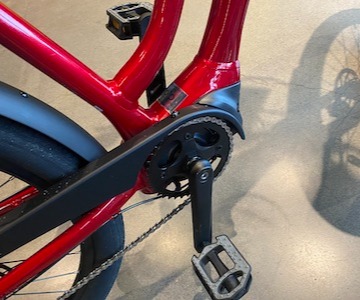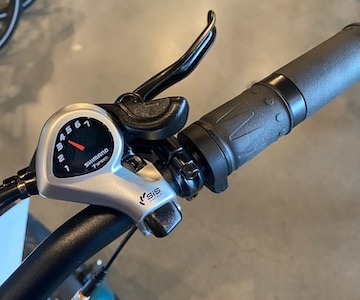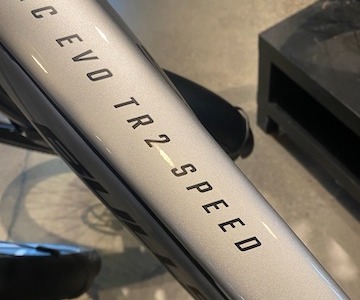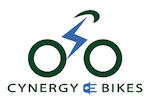E-Bike 101
A Quick Primer on Electric Bikes
So, you have seen e-bikes everywhere, and some of your friends are loving their rides. You are now interested, but you don't know where to start or what questions to ask. Well, we are here to help. This is a very quick and basic orientation to what is different (or not) with an e-bike, which features will fit the type of riding you do, and what you definitely should ask about to avoid buyer's remorse.
What Is New, and What Is Familiar?
In the big picture an electric bike, or e-bike, will be very familiar if you already have a bike. Just like a traditional bike, e-bikes come in a variety of models to accommodate the needs of different riders. Some are oriented to commuters, others are designed for mountain biking, etc, and so many of the features of an e-bike are the same, using the same or very similar components such as chains, brakes, shifters, etc. The difference, at the base level, is that e-bikes have an integrated power system consisting of a motor, battery and a controller that will provide power assist to make your trip quicker and with less effort, enabling you to go farther and get there faster. Sort of like bike riding with super powers!
What distinguishes an e-bike from a scooter or motorcycle? The pedals!! All e-bikes have pedals that power the bike forward. (More on that below.) But e-bikes also limitations on top speed. These two features -- working pedals and speed limitation -- are what enables an e-bike rider to share the road without needing a drivers license, vehicle registration and license plate.
What Is Up With E-Bike "Classes"?
You may have heard about different classes of e-bikes. These are general categories that many bike manufacturers and government jurisdictions use to define e-bikes. They are not perfect definitions (details can vary depending upon the government agency) but they are generally defined as follows:

Class 1
- Pedal Power Assist
(no throttle) - Top Speed 20mph
- Legal in any area that allows e-bikes.

Class 2
- Both Throttle and Pedal Power Assist
- Throttle speed usually limited to 20mph
- Pedal Power Assist speed limit often faster, up to 28mph
- Some areas that allow e-bikes may not allow Class 2 or 3 e-bikes. Know before you ride!

Class 3
- Pedal Power Assist
(no throttle) - Top Speed up to 28mph
- Some areas that allow e-bikes may not allow Class 2 or 3 e-bikes. Know before you ride!
Remember, with e-bike classes things are not set in stone. Definition details change depending upon the city, state or region, but these are that is the general shape of things. And also, the class is not an indicator of bike value. The most expensive mountain e-bike, or eMTB, in the shop is probably a Class 1 since many areas that allow eMTBs don't allow for Class 2 throttle or Class 3 speedy e-bikes. And for commuters, while many love Class 3 bikes because you can get across town faster, many riders are more concerned about safety than speed and prefer a Class 1. So keep an open mind when considering e-bike class.

Talk To Me About Motors
Well, since you asked... ;-)
There are variations, but the vast majority of e-bikes are of two varieties...
Hub-Drive | Mid-Drive |
|
|
While there are technical considerations to consider, the location of the motor is less critical than other factors, including...
- Power Output - Affects responsiveness and speed.
- Torque - Very important in hilly areas or if you plan to carry heavy loads.
- Quality & Reliability - Cheap motors are more issue prone, especially if you ride a lot.
- Availability of Service & Parts - Is the motor so cheap that it can't be serviced or replaced if a problem does come up? Can a local shop service the bike you are about to buy? Buyer beware! We have seen bikes purchased online or at big box chains that died in less than a year and we were unable to provide service because we can't get the parts. Suddenly that cheap e-bike isn't such a good deal.
- Warranty - Make sure the warranty REALLY provides coverage. We have seen e-bike warranties that don't cover the motor, battery of electrical system. More common are online-purchased bikes where the warranty requires you to ship the bike at your own cost to aother state in order to get service.
E-bikes are a major purchase. Ask questions. Know what you are buying. Test ride before you buy. Make sure you have a local shop that can get parts and provide service BEFORE you buy.
And What About Batteries?
That is a BIG topic for a number of reasons. That's why we have an article specifically about battery safety and care. Check it out!
